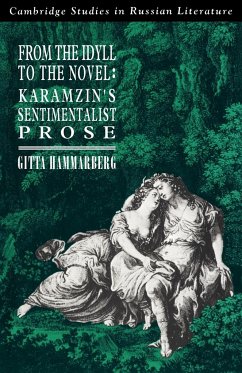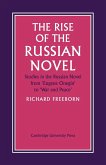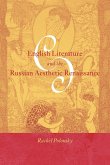Professor Hammarberg shows the range of Sentimentalism, its place in literary evolution, and the ways in which it anticipates the Romantic movement and the modern Russian novel.
Karamzin was the foremost Russian representative of the late eighteenth-century Sentimentalist movement. In this study, Gitta Hammarberg makes use of recent advances in literary theory (especially those based on the work of Bakhtin and Voloshinov) in order to develop a new theory of Sentimentalist literature, which she applies to Karamzin's prose fiction. Professor Hammarberg situates Sentimentalism in its historical context, as a reflection of contemporary shifts in world view, a reaction against the neo classicist view of literature, and a vehicle for legitimizing prose fiction. She stresses the importance of the role of the author-reader in the structure of Sentimentalist texts, and relates this to the style and genres of these works. Through close readings of a representative selection of Karamzin's prose fiction, including works previously disregarded as trivial or frivolous, she shows the range of Sentimentalist fiction, its place in literary evolution, and ways in which it anticipates the Romantic movement and the modern Russian novel.
Table of contents:
Acknowledgments; Notes on the text; 1. The literary and intellectual context; 2. Theory of Sentimentalism; 3. The literary model: the idyll; 4. The extra-literary model: salon trifles; 5. Serious Sentimental tales: narrator as narratee; 6. Humorous Sentimental tales: the narrator as parodist; Notes; Bibliography; Index.
Karamzin was the foremost Russian representative of the late eighteenth-century Sentimentalist movement. In this study, Gitta Hammarberg makes use of recent advances in literary theory (especially those based on the work of Bakhtin and Voloshinov) in order to develop a new theory of Sentimentalist literature, which she applies to Karamzin's prose fiction. Professor Hammarberg situates Sentimentalism in its historical context, as a reflection of contemporary shifts in world view, a reaction against the neo classicist view of literature, and a vehicle for legitimizing prose fiction. She stresses the importance of the role of the author-reader in the structure of Sentimentalist texts, and relates this to the style and genres of these works. Through close readings of a representative selection of Karamzin's prose fiction, including works previously disregarded as trivial or frivolous, she shows the range of Sentimentalist fiction, its place in literary evolution, and ways in which it anticipates the Romantic movement and the modern Russian novel.
Table of contents:
Acknowledgments; Notes on the text; 1. The literary and intellectual context; 2. Theory of Sentimentalism; 3. The literary model: the idyll; 4. The extra-literary model: salon trifles; 5. Serious Sentimental tales: narrator as narratee; 6. Humorous Sentimental tales: the narrator as parodist; Notes; Bibliography; Index.








